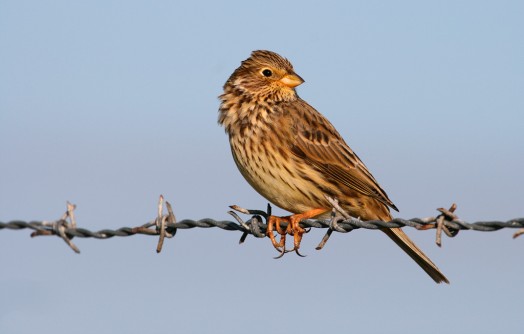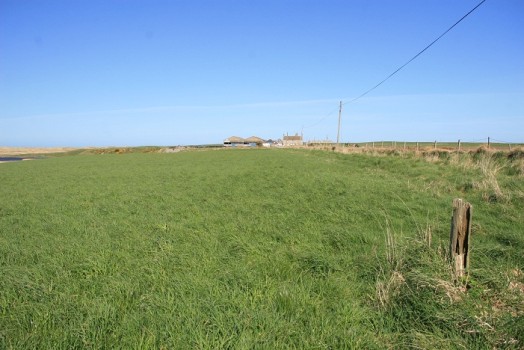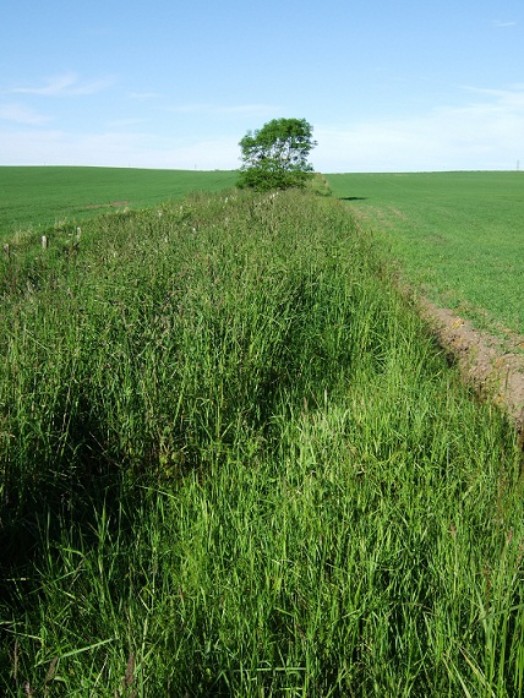Supporting guidance for Corn Buntings Mown Grassland
This is an old version of the page
This is an old version of the page
Date published: 30 March, 2015
Date superseded: 11 December, 2015

To survive and breed successfully, corn buntings need:
- safe nesting habitat within crops
- insect food for adults and young
- overwinter food and cover
The Corn Buntings Mown Grassland option aims to provide safe nesting areas for corn buntings by preventing nest destruction due to early mowing in grass silage or hay fields.
Corn buntings nest late, laying their first clutches between late-May and mid-June, and their second clutches as late as mid August. Young can be in the nest into September.
Delaying grass harvesting operations will ensure that more birds can successfully raise broods. Nesting success is greater in grass fields that are harvested after the beginning of August, compared to fields that are mown in June or July.
Where to locate your corn buntings mown grassland
Corn buntings build their nests in dense vegetation on or near to the ground.
In the east of Scotland most birds nest in grass silage, hay or cereal crops, often in a tussock or weedy patch. Some will also nest in brassicas and rough grassland.
In the Uists, most birds nest away from cultivated ground, often in hogweed patches on machair. Therefore this option is not relevant for the Uists, although other options providing overwinter food and cover may be suitable.

Perfect field for corn buntings mown grassland – Credit: Hywel Maggs
This option should be used on grass fields managed for silage or hay that already attract nesting corn buntings. Such fields are likely to be in open landscapes well away from woodlands, but where overhead wires or scattered trees or bushes provide song-posts for territorial males. Corn buntings also favour cereals, so this option will be most effective on mixed farmland.
If waders are breeding in the area consider ceasing field operations before 1 April rather than 1 May to accommodate the wader interests. Waders start nesting early in spring and field operations after 1 April could damage nests.
Alternatively, the Wader and Wildlife Mown Grassland option provides support for ceasing field operations before 1 April where waders are the primary interest.
If you are unsure which species is the priority in the area you intend to manage seek further advice.
How to increase the success of this option
Corn buntings will benefit most where you carry out this option with other arable options that provide overwinter seed food and insect food during the summer on the same farm, such as:

Field margin – Credit: Allan Perkins
Adult corn buntings eat the seeds of cereals, grasses and weeds, but they feed their young mainly on insects such as caterpillars, beetles and spiders. Leaving an unmanaged strip around the margins of fields will increase these populations of insects and provide cover for fledged birds.
Consider creating headlands greater than 10 metres wide as this provides safe, attractive nesting habitats for corn buntings, which prefer to nest in crops with dense ground cover, usually beyond 10 metres from the field edge.
What else benefits from this option
As well as corn buntings, delayed mowing is likely to benefit a range of other species including meadow-nesting birds such as skylark and curlew, bumblebees, spiders, beetles, brown hare and other small mammals such as voles.
Further information
The Farmland Bird Lifeline website contains more information about corn bunting conservation in eastern Scotland.
For information on corn bunting conservation in general visit the RSPB advisory pages.
